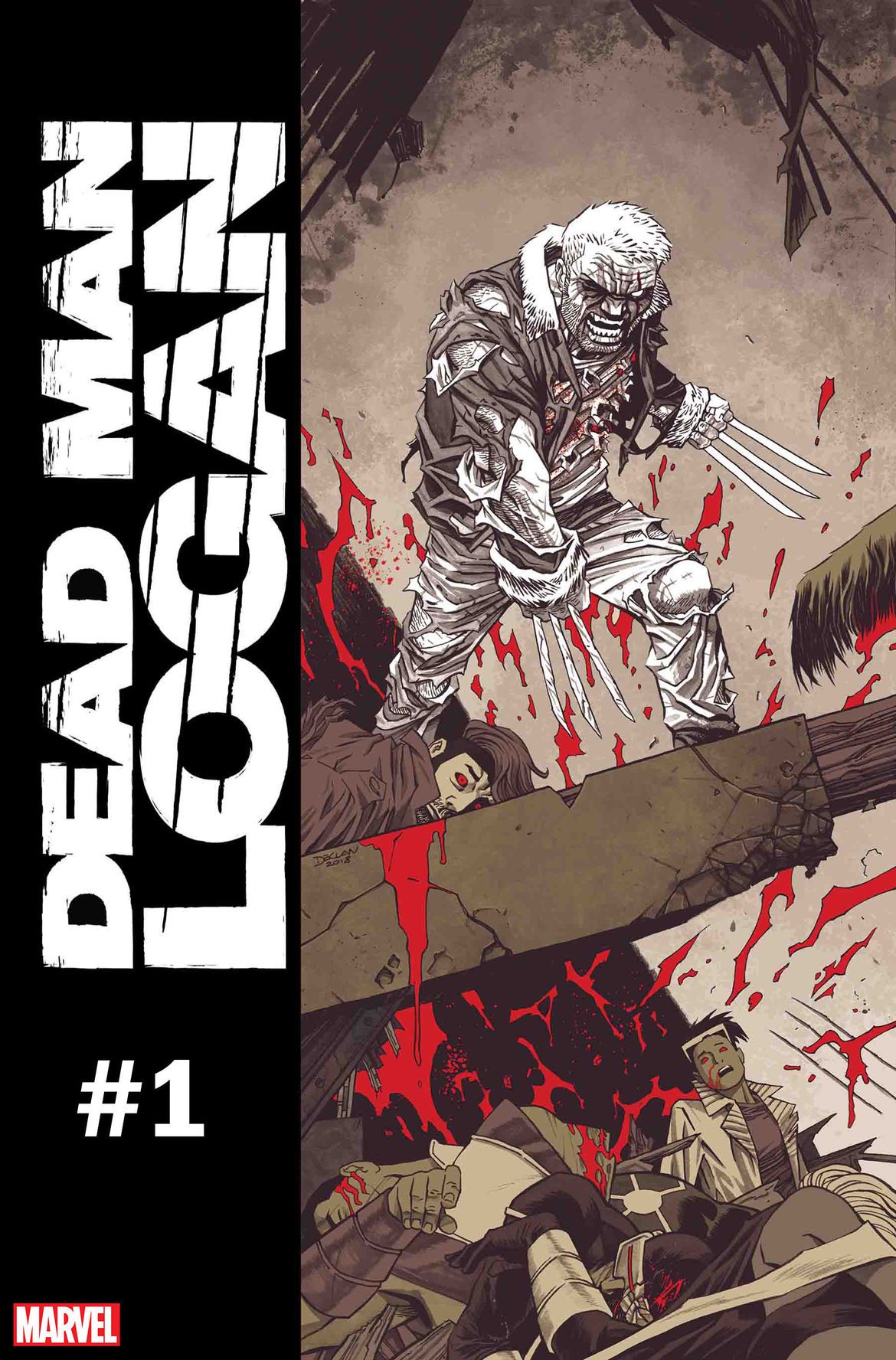Wolverine Reaches The End (Again) in Dead Man Logan #1
- WRITER
- Ed Brisson
- Artist
- Mike Henderson
- Letterer
- VC's Cory Petit
- Cover Artist
- Declan Shalvey
- Publisher
- Marvel Comics
- Price
- 4.99
- Release Date
- 2018-11-28
- Colorist
- Nolan Woodard
It’s a strange time to be a fan of Wolverine right now. Of course, with a history that involves secret origins, trips to Hell, evil sons, bone claws and a feral, noseless stage in the ‘90s, has there ever really been a normal period in Logan’s life? Yet despite this, there are now two miniseries starring the mutant running concurrently in the Marvel Universe: one bringing the character back from the dead, and one looking to kill him off entirely. And while, yes, you could argue that they’re two different versions of the character, that doesn’t make it any less of a strange time to be a fan.
Continuing his run on the now finished Old Man Logan series, writer Ed Brisson is ending his time with the character and -- seemingly -- the character himself, with the potentially spoilery name Dead Man Logan.
Speaking of the title, there is something delightfully ridiculous about calling a book Dead Man Logan, in a way that almost winks at the reader as it gives ‘comic book absurdity’ a great big hug. Don’t forget that this is Old Man Logan we’re talking about, perhaps the grimmest, grittiest version of Wolverine there is, and one imagines that if you’re not too careful, you can fall down a very dark hole writing a character like that. Luckily, as the title subtly implies, Brisson is looking to skip headlong into the darkness rather than skulk in the shadows.
RELATED: Old Man Logan Finally, Definitively Kills a Major Character
That’s not to say that this first issue is funny, per se (even though there are some genuinely humorous moments where Hawkeye is concerned). It’s more that, for a book that’s about an old man trying desperately to avenge the death of everyone he’s ever killed by mercilessly hunting down the one man whose fault it really is, Dead Man Logan isn’t afraid to have fun. Appropriately enough for a series that looks to bring the character to an end, there are a lot of callbacks to where it all began. Not only is the central team-up of Logan and Hawkeye as pivotal to the plot here as it was in the original run by Mark Millar and Steve McNiven, but the titular character is tracking down Mysterio, the man that messed with Logan’s mind in that alternate future (or is it past now?) and forced him to slaughter the entire superhuman community.
While it may be looking to the past to dictate its future, there’s very little prior reading you have to have done going into this other than the original story that introduced this version of Wolverine. Brisson is modest enough to know that there are those who haven’t followed the character throughout his own run but will still show up to see how it all ends. The issue picks up right where Old Man Logan #50 left off, but soon zips along to the next thing rather than dwell on the recent past. After that, the book moves along about as fast as Logan does, which is to say that it’s a series with a mission, and as such doesn’t waste any time setting up the major players, establishing the motivations and ending with a final page that threatens to give a lot of fans terrible flashbacks to recent Marvel events they’d rather forget (and that’s all that’s going to be said about that).
RELATED: Old Man Logan's Swan Song Isn't a Final Fight... It's a Suicide Attempt
Mike Henderson is one of the best comic artists around when it comes to pacing. His past work on Nailbiter proved that he can ramp up the tension with a single panel, and here that experience pays off extremely well. Not only is the book paced like an action movie, but Henderson’s keen structural eye ensures that the maximum is obtained from the minimum. Take an early scene involving a brawl in a bar. Henderson establishes Logan’s systematic approach to fighting a crowd of villains by opening up the scene to a double-page, with Wolverine shown moving across from left to right, mowing down people as he goes. Conversely, a scene later in the book shows Logan and Hawkeye meeting up in an abandoned warehouse, and the emphasis on emptiness and shadows drives home the feeling that Wolverine himself has, which is that at this moment, without Hawkeye, he’s alone in his mission.
Without resorting to the cynical answer “because money,” it’s hard to know why Old Man Logan didn’t meet his end at the conclusion to his own series, and why we need another series to properly conclude his tale. While this is a good opening issue, there’s not enough here to properly answer that question either, but the fact that Dead Man Logan is tying into the character’s beginnings is certainly a good thing. There’s always been a tragic sadness to Old Man Logan -- it’s practically engraved in the character at this point. But if this fun debut issue is anything to go by, that doesn’t mean that his ending has to be an entirely morbid affair.

